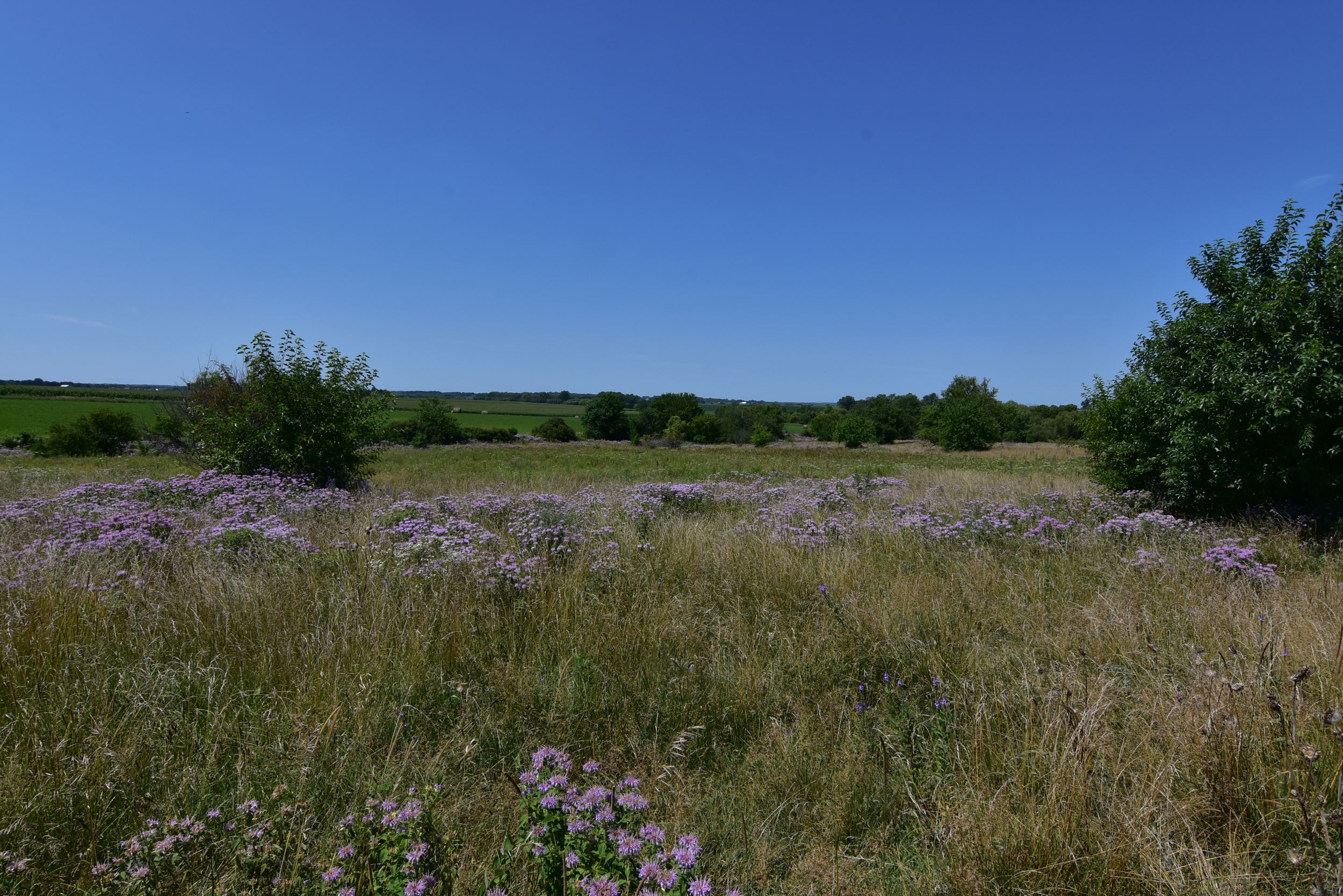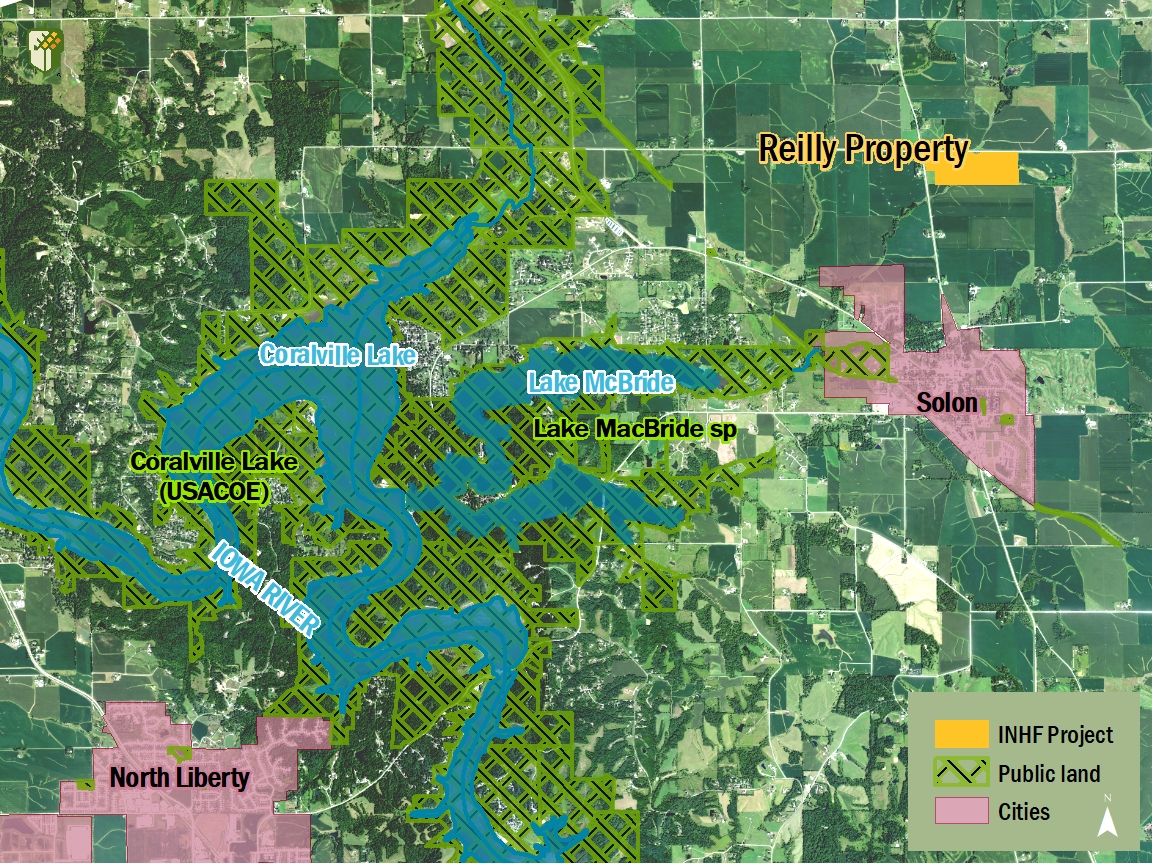Feat of the Fen
By Katy Hull on January 28, 2021 in Blog

Driving along Iowa Highway 1, you could easily pass the pasture and hayfield one mile north of Solon without noticing it. However, upon closer inspection, you’ll see that the land itself, its history and future are worth a second look.
Until last year, this land had been cared for by the same family for more than 100 years. Malinda Reif Reilly and her husband, John, were the latest in a long line in Malinda’s family to farm it. Malinda and John produced cattle, corn and soybeans for years on this 100-acre parcel, which has provided hay and pasture for a closed cattle herd since 1938. John and Malinda were committed to farming organically, and the farm has been certified organic since 1996.
The land’s pasture was always wet, but Malinda, and her father before her, insisted that it not be drained. As it happened, their decision and farming methods helped preserve the land’s special natural features, including a fen – a type of wetland – and associated uphill sand prairie.
By definition, a fen is a groundwater-fed wetland containing a high level of organic matter, and is characterized by water soaked ground and sporadic, sometimes bouncy, earth mounds surrounded by puddles of water caused by water rising to the surface. Fens are considered the rarest type of wetland in Iowa with just 300 known statewide, and are often home to rare plants and animals due to their unique conditions.
“The soil is still alive with microorganisms and bacteria from the retreat of the glaciers thousands of years ago. There are very few land parcels (left) in Iowa with this history,” said John.
Native plant species that have been identified so far in this fen include boneset, white turtle head, common tussock sedge, dark green rush and swamp saxifrage. Botanists have studied the entire property for over 25 years and have catalogued 225 plant species.
“We have known how special this place is for over 20 years,” said Iowa Natural Heritage Foundation President Joe McGovern. “I remember standing on the edge of the fen, talking with Malinda about her vision for protecting this land for others to enjoy and learn from.”
But as sometimes happens, circumstances prevented Malinda from protecting the land during her lifetime. Before she passed, Malinda asked John to ensure that the fen and prairie would be preserved forever. Following her death in 2015, John contacted the Johnson County Conservation Board (JCCB) with the hope of honoring her memory by protecting this land.

JCCB Director Larry Gullett asked INHF for assistance acquiring the property. INHF, JCCB and Reilly negotiated a price for the land and INHF purchased it from Reilly in 2018. The land will transfer to JCCB in early 2021.
“It is truly meaningful to be part of fulfilling Malinda’s dream and protecting this special place all these years later,” McGovern said.
JCCB was able to secure a Resource Enhancement and Protection (REAP) grant to help fund the purchase of the property. This extremely competitive grant helps maintain Iowa’s native biodiversity through the protection of high-quality conservation land across the state.
“With more than 90% of Iowa’s landscape altered for agriculture and development of our urban centers, providing space for plants and animals to continue their existence is one of the most important things we as humans can do,” said Gullett.
JCCB plans to restore the fen and upland prairie over several years, providing quality wildlife habitat for neotropical migratory birds, small mammals and insects, including the federally-endangered rusty patched bumble bee, which has been found nearby. JCCB will manage the site as a nature preserve, providing public access for hiking, educational and nature-appreciation activities.
The site will be known as the “Malinda Reif Reilly Fen and Prairie” to honor the memory of its previous owner.
For John, this is one of the best parts of protecting this property. “This land is her life,” he said. “And she is still present here.”
